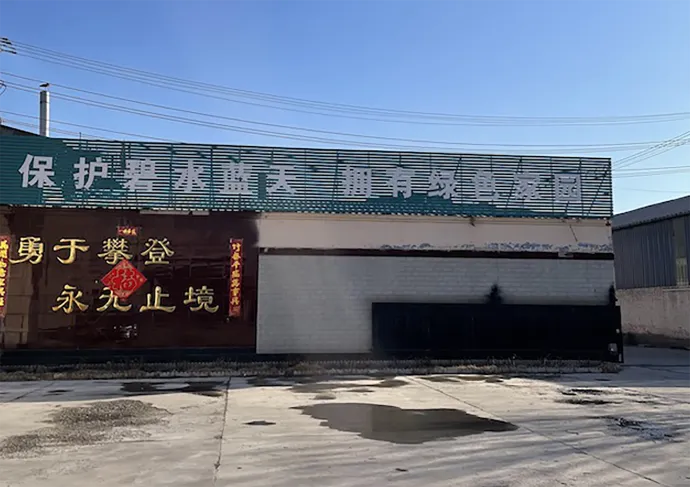- Afrikaans
- Albanian
- Amharic
- Arabic
- Armenian
- Azerbaijani
- Basque
- Belarusian
- Bengali
- Bosnian
- Bulgarian
- Catalan
- Cebuano
- Corsican
- Croatian
- Czech
- Danish
- Dutch
- English
- Esperanto
- Estonian
- French
- German
- Greek
- Hindi
- Indonesian
- irish
- Italian
- Japanese
- Korean
- Lao
- Malay
- Myanmar
- Norwegian
- Norwegian
- Polish
- Portuguese
- Romanian
- Russian
- Serbian
- Spanish
- Swedish
- Thai
- Turkish
- Ukrainian
- Uzbek
- Vietnamese
Noy . 05, 2024 21:59 Back to list
Alternative Insulation Options for Mineral Fiber Board Applications
Mineral Fiber Board A Versatile and Eco-Friendly Building Material
Mineral fiber board, often referred to as mineral wool board, is a versatile and eco-friendly material that has gained considerable attention in recent years for its remarkable properties and applications in the construction industry. Composed primarily of natural or recycled materials, this building product is recognized for its insulating, soundproofing, and fire-resistant qualities. As sustainability becomes an increasingly significant focus in construction and architecture, mineral fiber boards present a compelling option for builders, architects, and homeowners alike.
Composition and Properties
Mineral fiber boards are primarily made from natural and recycled minerals, such as basalt, slag, and glass fibers. The manufacturing process typically involves melting these materials at high temperatures and spinning them into fibers. These fibers are then combined with a bonding agent and formed into boards. The result is a lightweight, rigid board that offers an impressive range of characteristics.
One of the most noteworthy properties of mineral fiber boards is their thermal insulation capabilities. They provide excellent resistance to heat transfer, thereby improving energy efficiency in buildings. This thermal performance translates into reduced energy consumption for heating and cooling, ultimately lowering utility costs. Moreover, the boards can help maintain a stable interior climate, contributing to occupant comfort.
In addition to thermal insulation, mineral fiber boards are also known for their sound attenuation properties. The dense structure of the material effectively absorbs sound waves, making it an ideal choice for applications in commercial buildings, schools, and residential settings. By reducing noise pollution, mineral fiber boards contribute to a quieter and more pleasant living or working environment.
Fire Resistance
Safety is a top priority in building design, and mineral fiber boards excel in this regard as well. Due to their inorganic nature, these boards are inherently fire-resistant, offering protection against flames and high temperatures. This characteristic is crucial in commercial buildings where fire safety regulations are stringent. Using mineral fiber board can significantly enhance a building’s fire rating, providing peace of mind for occupants and property owners while also potentially lowering insurance premiums.
mineral fiber board

Environmental Benefits
From an environmental perspective, mineral fiber boards stand out as a sustainable building material. The use of recycled materials in their production helps to reduce waste and conserve natural resources. Additionally, the energy efficiency they promote contributes to lower carbon footprints during a building's operational life. Many manufacturers also adhere to stringent environmental standards, ensuring that their products are free from harmful chemicals and comply with regulations that protect indoor air quality.
Applications
The versatility of mineral fiber boards lends themselves to a wide array of applications in construction. They can be used for exterior sheathing, interior wall partitions, ceiling tiles, and as insulation in roofs and floors. Their adaptability is complemented by various finishes and textures, allowing for both functional and aesthetic integration in various architectural designs.
In commercial settings, such as offices and schools, mineral fiber boards are often utilized for their soundproofing qualities and ease of installation. Additionally, their fire-resistant properties make them an ideal choice for high-rise buildings and facilities where safety is paramount.
Conclusion
In conclusion, mineral fiber board represents a forward-thinking solution for modern construction challenges. Combining excellent thermal insulation, soundproofing, and fire resistance with environmental sustainability, these boards offer numerous advantages that align with contemporary building practices. As the construction industry increasingly moves towards eco-friendly materials, mineral fiber boards will likely play a critical role in sustainable building design for years to come. By choosing mineral fiber boards, builders and architects not only enhance the safety and efficiency of structures but also contribute positively to the environment, marking a significant step towards a more sustainable future in construction.
-
Transform Interiors with PVC Gypsum Ceiling: A Stylish, Durable, and Moisture-Resistant SolutionNewsMay.19,2025
-
The Smart Interior Upgrade: Discover the Durability and Versatility of Gypsum Ceiling Access Panel SolutionsNewsMay.19,2025
-
The Smart Choice for Interior Design: Discover the Value of PVC Gypsum Ceiling SolutionsNewsMay.19,2025
-
Mineral Fiber Ceiling Tiles: The Smart Blend of Performance and AestheticsNewsMay.19,2025
-
Mineral Fiber Ceiling Tiles: The Superior Choice Over Gypsum for Sound and Fire SafetyNewsMay.19,2025
-
Mineral Fiber Ceiling Tiles: Eco-Friendly Strength and Style for Every CeilingNewsMay.19,2025







